edison123
Electrical
- Oct 23, 2002
- 4,507
What could be the reasons for high vibrations in all 3 axes at both bearings in 2 pole, 3000 RPM, 50 Hz motor as given below?
These are uncoupled/open shaft vibration readings.
Thanks for inputs.
Motor DE Vertical
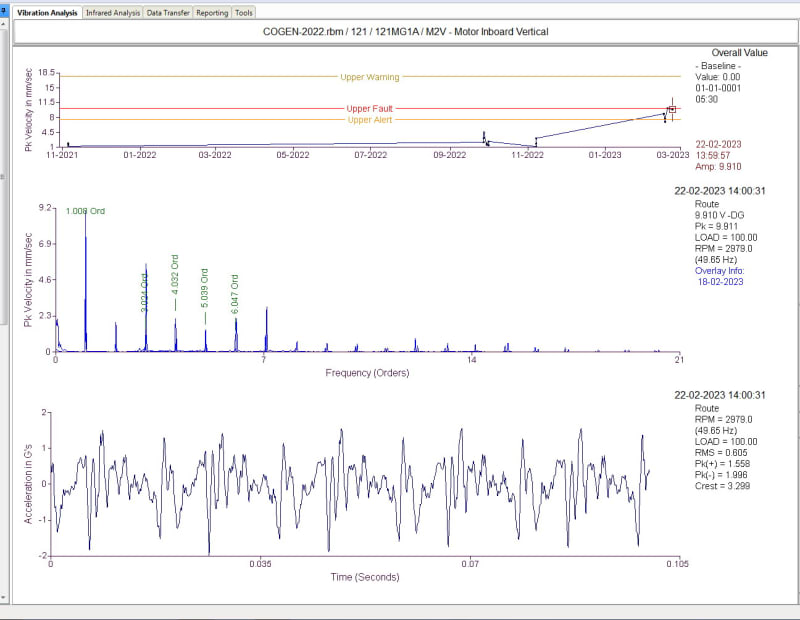
Motor DE Horizontal
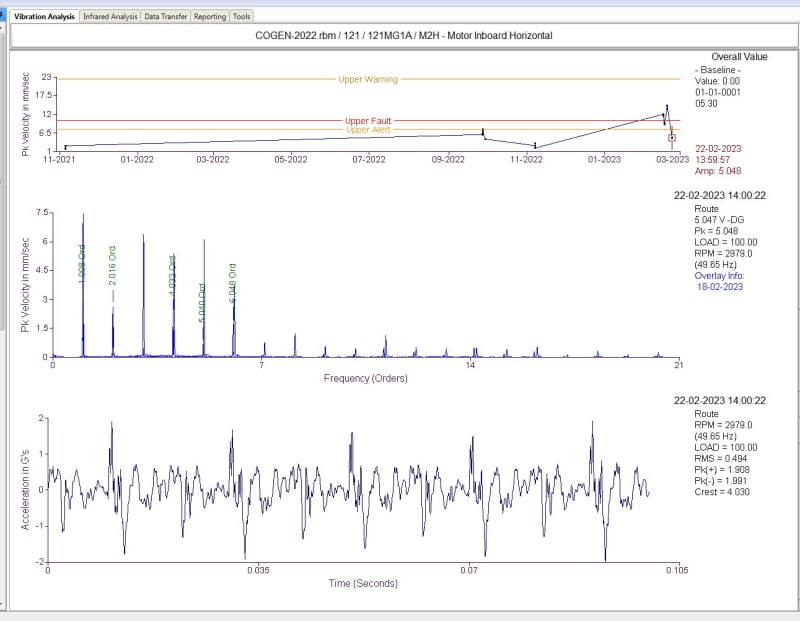
Motor DE Axial
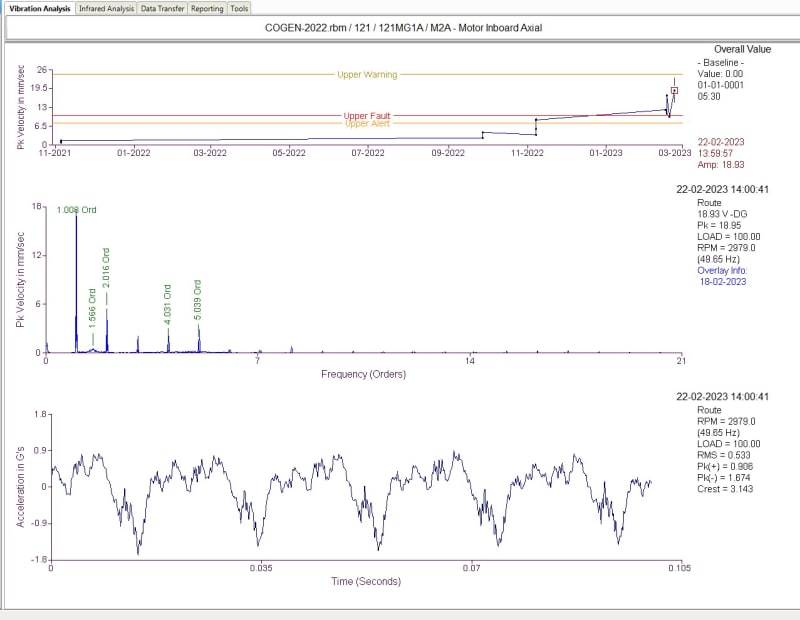
Motor NDE Vertical
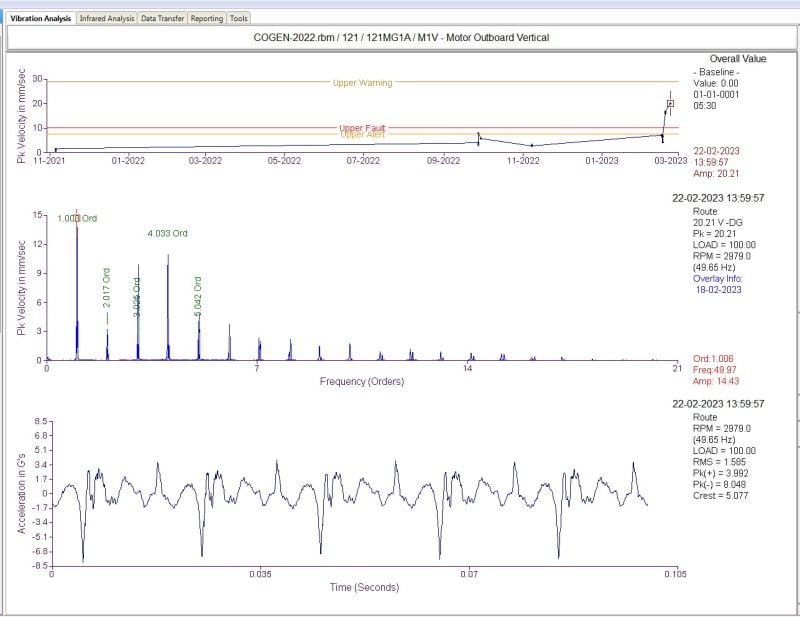
Motor NDE Horizontal
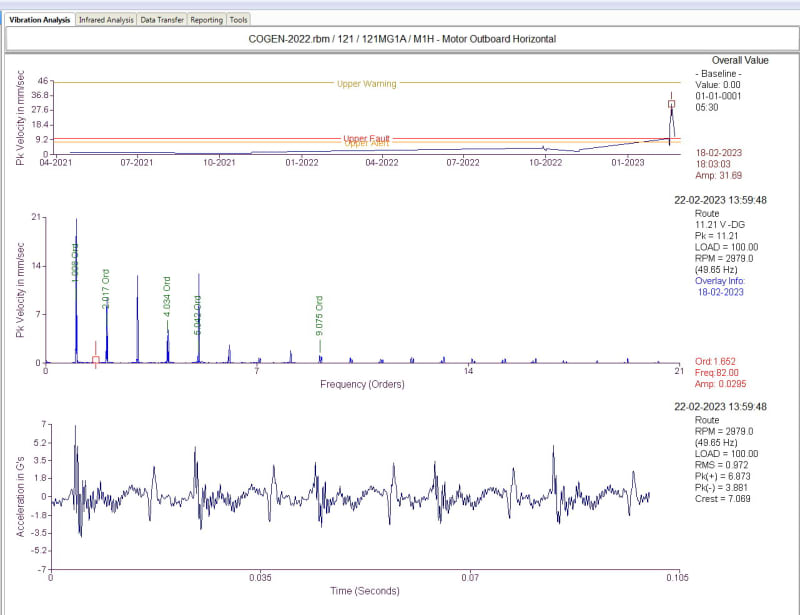
Motor NDE Axial
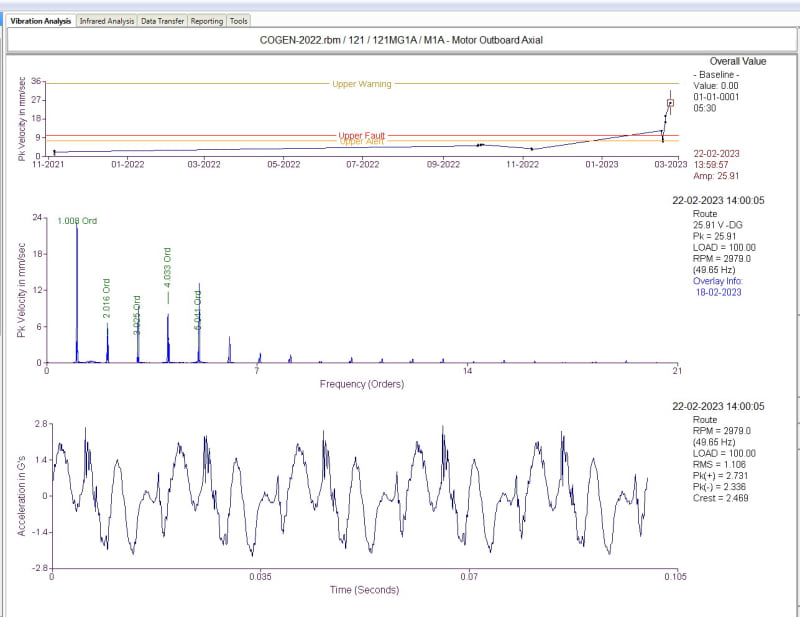
These are uncoupled/open shaft vibration readings.
Thanks for inputs.
Motor DE Vertical

Motor DE Horizontal

Motor DE Axial

Motor NDE Vertical

Motor NDE Horizontal

Motor NDE Axial

